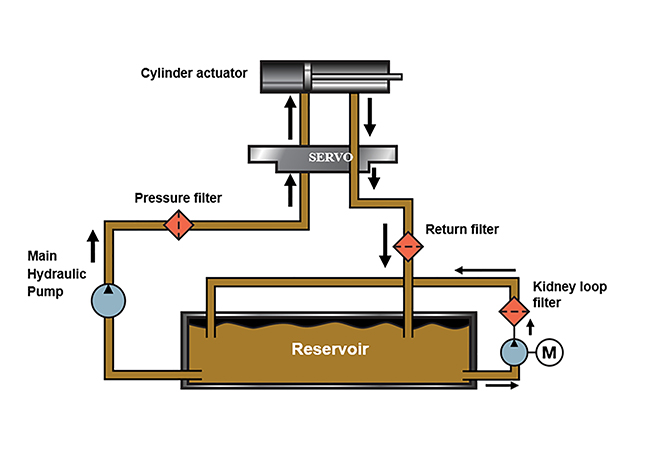Is there an ideal location for placement of hydraulic filters in an operating system, and if so what is the correct type of filter to use? Is one filter sufficient, or should multiple filters be used? Can different types of filtration be combined?
Matt Brown, Product Manager Filter Systems for Schroeder Industries explains that in many cases, only a single pressure filter (downstream of pump) is used in a hydraulic circuit to protect the equipment and to clean the fluid.
“This one filter is then responsible for 100% of the work and there is no back-up of any kind. If the filter is filled-up, which can occur, the flow consequently goes to bypass. The fluid is no longer filtered which means that the system is no longer protected.”
To prevent this from happening, using two filters is the answer, creating a more balanced approach. “This is done by adding a return filter to the system,” Brown said. “In this configuration, both filters are each taking care of 50% of the work and some protection is always in place even if one filter would begin to experience bypass.”
“However, in general, the ideal situation is to replace the filter elements as soon as the differential pressure indicator (dirt indicator) indicates the need for a change,” he said. “Usually, the indicator trips at around 75% of full bypass pressure. This leaves the operator some time for changing the elements.”

Taking line filtration one step further, the optimum protection for any hydraulic system is to use the three-filter option: one downstream of the pump, a return filter and a Kidney Loop System on the fluid filter reservoir.
Brown say that this is the best solution for optimum filtration and system operation. “Adding a Kidney Loop System on the fluid reservoir, in addition to the pressure and return filters (see illustration above) is the ultimate answer. A Kidney Loop System is continuously working 24/7 with constant flow and is not influenced by pressure and flow variations that are present in a typically hydraulic system. Therefore, the filter works very efficiently in removing particles and ends up in providing about 50% of the work (removing of particles), while the pressure/system filter now handle about 25% each.”
To determine what filtration options are best for any specific system, when considering what to install and where, Brown suggests doing some research on what the best options are that system, including what the working environment that the system is in.
By Joyce Laird


Leave a Reply